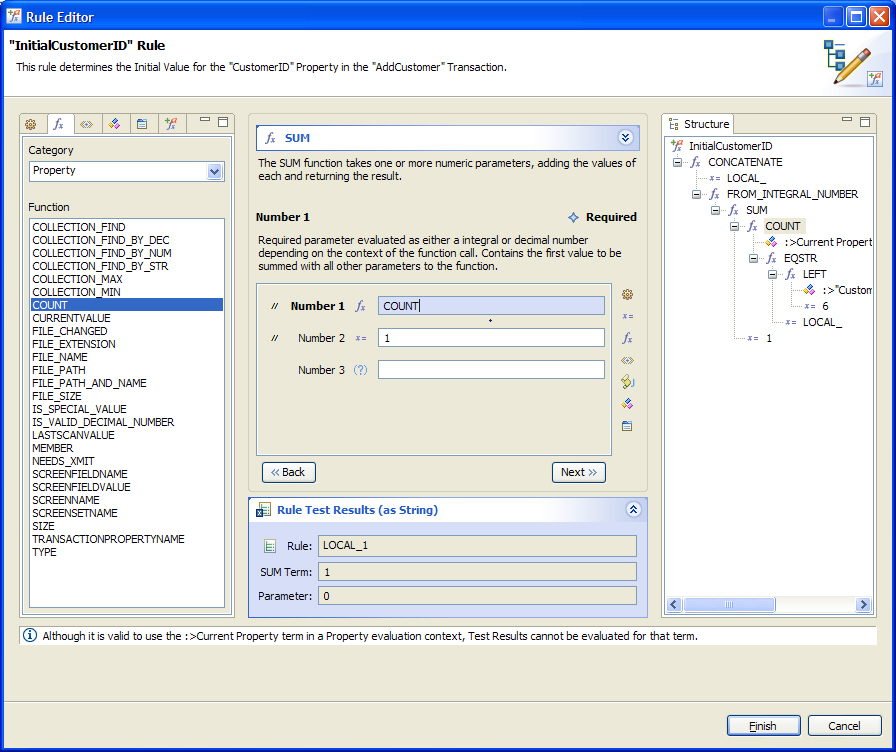The rule editor, in addition to providing the interface to define and edit rule definitions, also provides tools for testing rule definitions. Within the Rule Editor, below the list of function parameters, is an expandable frame labeled “Rule Test Results.” Expanding this frame will display the return value for the rule as currently defined, with certain assumptions made about return values within the rule. Using this test frame, the developer can select a parameter and then provide a test value for that parameter. The return value of the rule will then be determined and displayed, using the new test value.
The results of entering test data will not affect the rule definition in any way. However, proper use of the test functionality can significantly improve the stability of the rule before it is published for development and unit testing. Additionally, areas of logic for which the proper structure is unclear can be made easier when using the test data to determine if the expected values are actually returned by the logic within the structure. Note that while this functionality is a powerful development tool, it is not intended to replace the proper run-time testing that should be a part of any software development or product implementation project.

